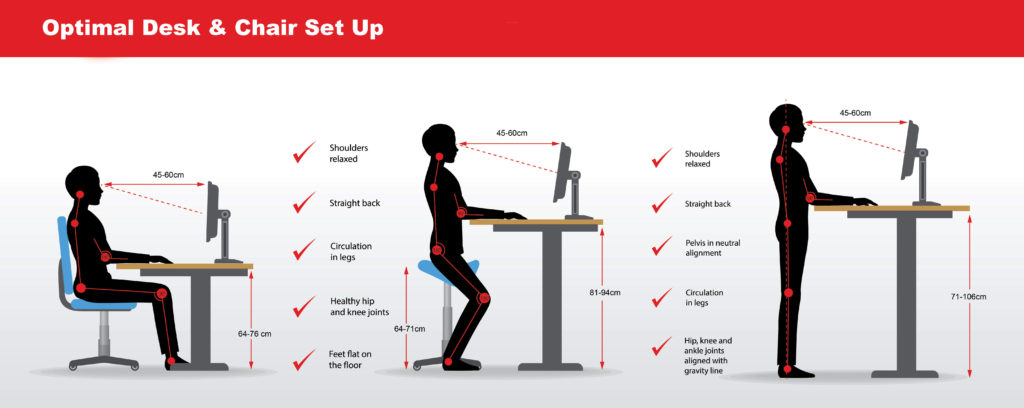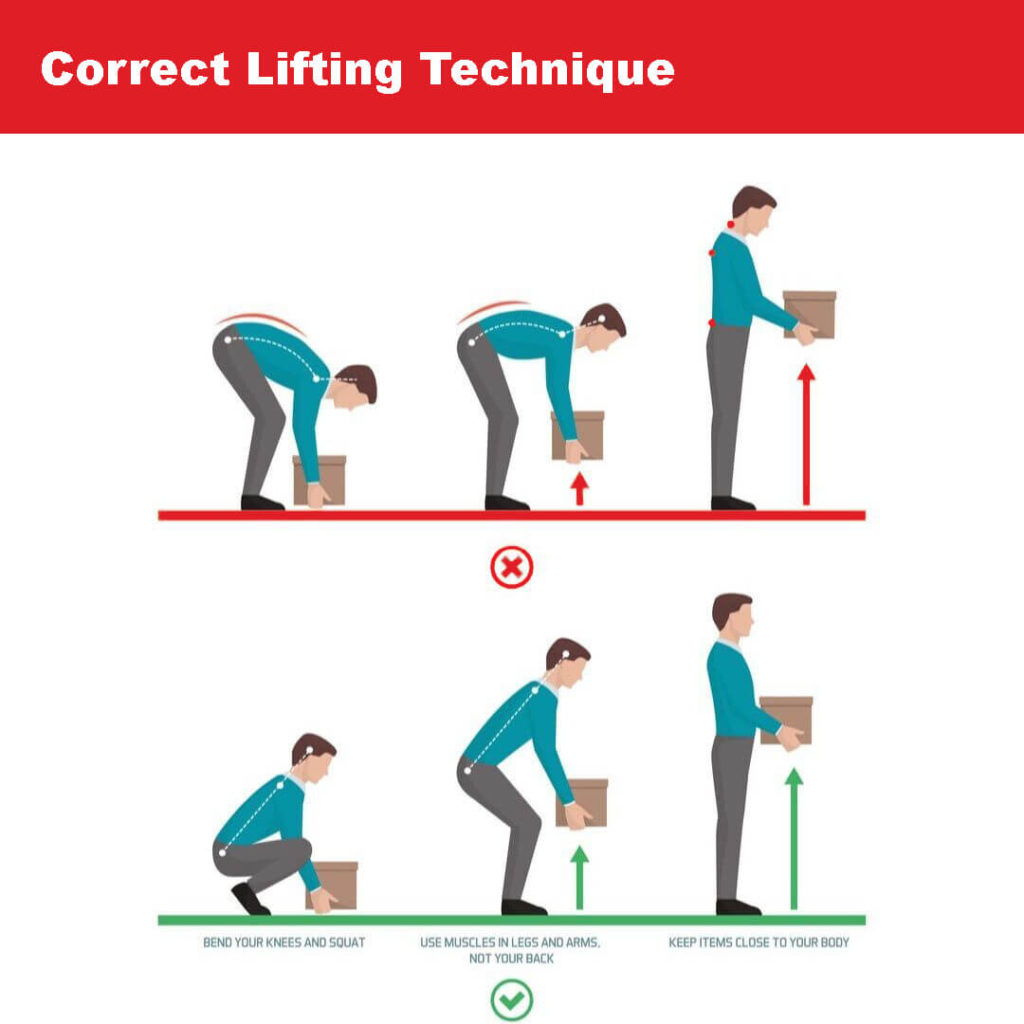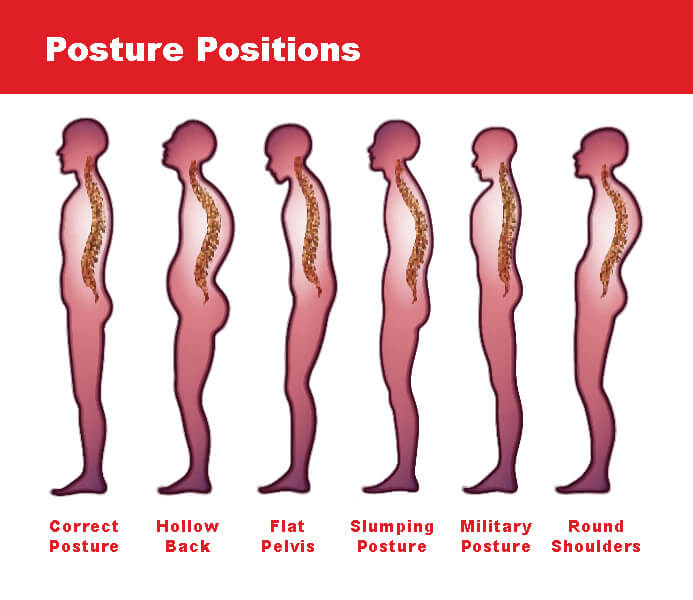Optimal Desk & Chair Set Up
Correct seating posture is an essential ingredient to preventing spinal injury and fatigue. The basic features of a good chair are :
- Height adjustable
- Pelvic tilt on seat
- Lumbar support
For optimal chair set up:
- Adjust the height of your chair so knees are level, or just below hip height, and your feet are flat on the floor.
- If your seat has a pelvic tilt, set to a slight forward incline to promote a natural inward lower back curve.
- Move the lumbar support so that it fits snuggly into the curve of your lower back. This will help to prevent lumbar strain and helps to maintain a straight spine and neck whilst seated.
Never sit with your legs crossed! Crossing at the ankles is preferable.

Ice & Heat Application
Ice is an effective anti-inflammatory and natural pain killer. Ice should be applied over the inflamed area in the acute or early stages of your problem.
Whenever you experience swelling, redness or sharp / stabbing pain it is generally considered best to apply ice.
Repeat until symptoms ease, usually for 24 to 48 hours. Following this you should alternate with ice and heat. If in doubt, contact RMPhysio.
Application – Place ice cubes in a plastic bag (or use a professionally prepared ice pack). Wrap the platics bag of ice cubes in a damp face washer or tea towel and place of the problem area.
The first application should be as follows:
20 minutes on and 2 hours off.
During waking hours, apply the ice pack every 2 hours, or as indicated by your Physiotherapist.
Heat is an effective therapy for reducing muscular tension and pain and is best used AFTER the initial inflammation has subsided.
Correct Lifting
Lifting injuries are a common cause of back pain. You can protect yourself against damage with good lifting habits, both at home and in the workplace.
When you lift, your spine is put under stress. Twisting or jerking while lifting and carrying can injure the small joints of the spine. The discs which separate the vertebrae (spinal bones) and the ligaments which hold the vertebrae together are also at risk. The discs are composed of a jelly-like core, surrounded by a strong fibrous ring. With repeated unsafe lifting, the fibrous ring or its supporting ligaments may tear or rupture. This is commonly known as a disc bulge or herniation.

Lifting while bent forward will increase the stress on your spine. Contributing to this stress are factors like the weight of the load, how far it is held from your body, how often and how fast you lift and how long you hold the load. To protect your spine from injury, always attempt to take the following steps:
- Get a firm footing with your feet apart for a stable base.
- Bend your hips and knees instead of bending at the waist. This allows the leg muscles to take the load and not the spine.
- Tighten your abdominal muscles – these muscles support the spine when lifting
- Ensure you have a strong grip and the load is as close to you as possible.
- The closer it is to your spine the less force it exerts on your back
- Brace yourself for the lift but continue to breathe normally through the lift.
- Lift steadily and do not jerk the load
- Look straight ahead, not down.
- Keep your back straight and avoid twisting or bending to the side.
- To lower the object, place your feet as you did to lift, tighten stomach muscles and bend your hips and knees.
Posture

Posture is the position in which you hold your body upright against gravity while standing, sitting or laying down. Good posture helps to minimise the amount of strain imposed on our muscles, joints and ligaments whilst performing our daily activities.
Proper posture:
- Minimises muscle strain by keeping bones and joints in optimal alignment.
- Decreases the abnormal wearing of joint surfaces caused by overload and overstrain.
- Minimises ligamentous strain on the joints of the spine and posture loaded joints.
- Minimises fatigue due to more efficient use of muscles, allowing the body to use less energy.
- Helps prevents backache and muscular pain.
- Contributes to a more positive and assertive appearance.
Proper posture requirements:
- Good muscle and joint flexibility
- Strong postural muscles
- Balanced muscle tone on both sides of the spine
- An understanding of what constitutes good posture which leads to conscious correction.
- With practice, the correct posture for standing, sitting, and lying down will gradually replace your old posture.
What is the correct way to stand?
Most people when asked to stand with good posture immediately stand tall, arching their spine and pulling their shoulders back. It looks uncomfortable and is a far cry from a healthy standing posture. Keep it simple – try using PUPPET POSTURE!
Puppet posture is a term used to simplify the process of assuming correct posture. It works especially well with children as they can identify easily.
Imagine that you are a puppet with a string coming out of the top of your head. Gently lift the imaginary string upwards to straighten your spine. Your arms and shoulders will assume the best posture they can for your current spinal function. Watch yourself in the mirror to visualise what you are achieving. Practice regularly, it gets easier as your spine and muscles gain strength.
Sleeping Posture
Sleep on your back or side only. Do not sleep on your stomach as this often causes lower back and neck strain. Use a quality contoured pillow that provides adequate support to your head and neck whilst sleeping.
When getting out of bed, move to the side of the bed and push yourself up sideways while swinging your legs off the side. When your back is painful you may place a pillow under your knees (when on your back) or between your knees (when on your side).

